-
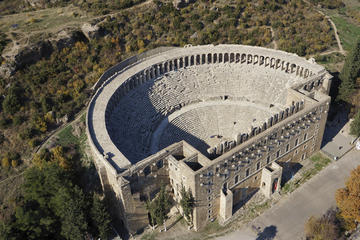 Aspendos Ruins and Theater
Aspendos Ruins and Theater Aspendos was an ancient Greco-Roman city founded around 1000 B.C. It was located about 25 miles from the modern city of Antalya, and its known for having one of the best preserved theaters from antiquity. Despite being built in 155, the theater is still in great shape an
Aspendos Ruins and Theater
Aspendos Ruins and Theater Aspendos was an ancient Greco-Roman city founded around 1000 B.C. It was located about 25 miles from the modern city of Antalya, and its known for having one of the best preserved theaters from antiquity. Despite being built in 155, the theater is still in great shape an
-
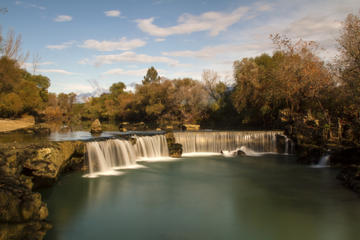 Manavgat Waterfalls
Manavgat Waterfalls The Manavgat Waterfalls are located along the Manavgat River just outside the town of Manavgat. Manavgat is located almost six miles from Side and about 50 miles from Antalya. The river flows through Manavgat and out to the Mediterranean Sea, making this area very fertile for g
Manavgat Waterfalls
Manavgat Waterfalls The Manavgat Waterfalls are located along the Manavgat River just outside the town of Manavgat. Manavgat is located almost six miles from Side and about 50 miles from Antalya. The river flows through Manavgat and out to the Mediterranean Sea, making this area very fertile for g
-
 Istiklal Street
Istiklal Street Istiklal Street, known in Turkish as Istiklal Caddesi, is one of the most well-known avenues in Istanbul. Stretching for about three kilometers, it is the main pedestrian thoroughfare in the city and welcomes as many as 3 million visitors on any given day.Known as Grand Avenue dur
Istiklal Street
Istiklal Street Istiklal Street, known in Turkish as Istiklal Caddesi, is one of the most well-known avenues in Istanbul. Stretching for about three kilometers, it is the main pedestrian thoroughfare in the city and welcomes as many as 3 million visitors on any given day.Known as Grand Avenue dur
-
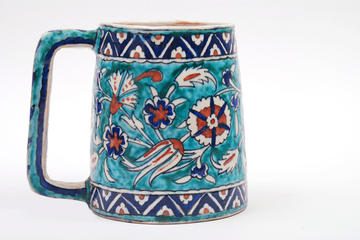 Sadberk Hanim Museum
Sadberk Hanim Museum The Sadberk Hanim Museum was established by the Vehbi Koc Foundation and named in honor of Vehbi Koc’s deceased wife, Sadberk. Featuring the private collection of Sadberk Koc, the museum consists of two 19th century villas in the Buyukdere neighborhood of Istanbul. Opened in 1
Sadberk Hanim Museum
Sadberk Hanim Museum The Sadberk Hanim Museum was established by the Vehbi Koc Foundation and named in honor of Vehbi Koc’s deceased wife, Sadberk. Featuring the private collection of Sadberk Koc, the museum consists of two 19th century villas in the Buyukdere neighborhood of Istanbul. Opened in 1
-
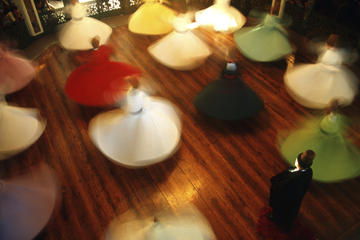 Hodjapasha Cultural Center
Hodjapasha Cultural Center It’s been said that music, rhythm, and dance are universal languages that can transcend borders, ethnicity, race, and time. This is certainly true at the Hodjapasha Cultural Center, where ancient Turkish and Anatolian traditions are rhythmically weaved right before your
Hodjapasha Cultural Center
Hodjapasha Cultural Center It’s been said that music, rhythm, and dance are universal languages that can transcend borders, ethnicity, race, and time. This is certainly true at the Hodjapasha Cultural Center, where ancient Turkish and Anatolian traditions are rhythmically weaved right before your
-
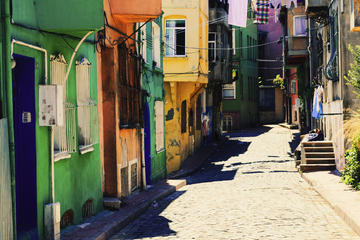 Balat
Balat Balat is a historically Jewish neighborhood on the shores of the Golden Horn in Istanbul. While a significant Jewish population existed in the area since Byzantine times, the community grew substantially as Jews were evicted from Spain in 1492. The most important attraction in the neighborh
Balat
Balat Balat is a historically Jewish neighborhood on the shores of the Golden Horn in Istanbul. While a significant Jewish population existed in the area since Byzantine times, the community grew substantially as Jews were evicted from Spain in 1492. The most important attraction in the neighborh
-
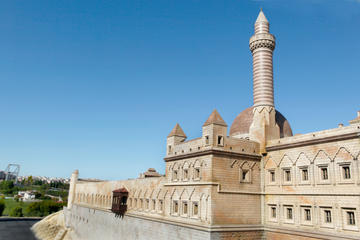 Miniaturk
Miniaturk One of the largest miniature parks in the world, Miniaturk opened in 2003 on the northeastern shore of the Golden Horn in Istanbul. Covering 60,000 square meters, the park features 120 models of structures from throughout Turkey. It is divided into three sections: Istanbul, Anatolia and
Miniaturk
Miniaturk One of the largest miniature parks in the world, Miniaturk opened in 2003 on the northeastern shore of the Golden Horn in Istanbul. Covering 60,000 square meters, the park features 120 models of structures from throughout Turkey. It is divided into three sections: Istanbul, Anatolia and
-
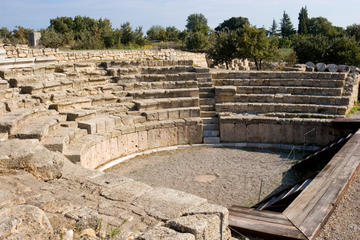 Historic Areas of Istanbul
Historic Areas of Istanbul The Historic Areas of Istanbul were added the UNESCO World Heritage list in 1985. The designation includes sites such as the Hagia Sophia, Topkapi Palace, Galata Bridge and Suleymaniye Mosque and is divided into four zones: the Archaeological Park at the tip of the Bosph
Historic Areas of Istanbul
Historic Areas of Istanbul The Historic Areas of Istanbul were added the UNESCO World Heritage list in 1985. The designation includes sites such as the Hagia Sophia, Topkapi Palace, Galata Bridge and Suleymaniye Mosque and is divided into four zones: the Archaeological Park at the tip of the Bosph
-
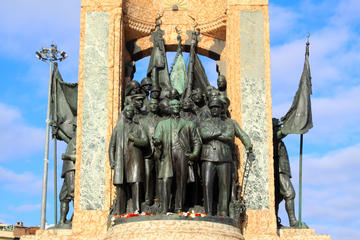 Taksim Square
Taksim Square Located on the European side of Istanbul, Taksim Square is the heart of the modern part of the city. It takes its name from the stone reservoir on the west side of the square, which today houses the Taksim Republic Art Gallery. Sultan Mahmud I originally established the square as the
Taksim Square
Taksim Square Located on the European side of Istanbul, Taksim Square is the heart of the modern part of the city. It takes its name from the stone reservoir on the west side of the square, which today houses the Taksim Republic Art Gallery. Sultan Mahmud I originally established the square as the
-
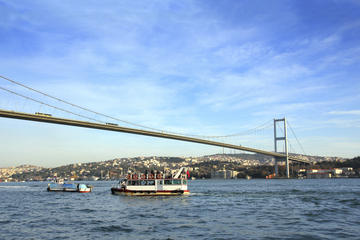 Bosphorus
Bosphorus Bosphorus, or the Istanbul Strait, functions not just as a border between Europe and Asia, but as one of the most beautiful sites in all of Turkey. Lined with scenic greenery, palaces, parks, and not to mention an absolutely gorgeous waterfront, Bosphorus has much more to offer than one
Bosphorus
Bosphorus Bosphorus, or the Istanbul Strait, functions not just as a border between Europe and Asia, but as one of the most beautiful sites in all of Turkey. Lined with scenic greenery, palaces, parks, and not to mention an absolutely gorgeous waterfront, Bosphorus has much more to offer than one
-
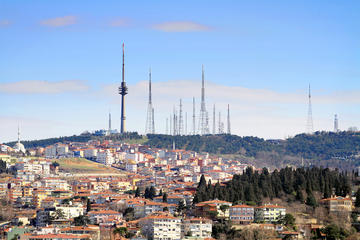 Camlica Hill
Camlica Hill Just a few kilometers from Uskudar in Istanbul, Camlica Hill offers a different perspective of the city. Split into two hills – Big Camlica and Little Camlica – it is a popular destination for residents to picnic and barbeque on the weekends.At 267 meters above sea level, Big Camlica
Camlica Hill
Camlica Hill Just a few kilometers from Uskudar in Istanbul, Camlica Hill offers a different perspective of the city. Split into two hills – Big Camlica and Little Camlica – it is a popular destination for residents to picnic and barbeque on the weekends.At 267 meters above sea level, Big Camlica
-
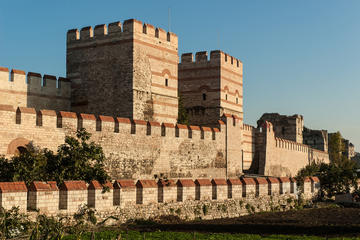 Walls of Constantinople
Walls of Constantinople Constantine the Great began construction in the year 324, the Walls of Constantinople completely surrounded the new city, protecting it from attack by land and by sea. Beginning at the Church of St. Anthony at the Golden Horn and running south and southwest to the Church o
Walls of Constantinople
Walls of Constantinople Constantine the Great began construction in the year 324, the Walls of Constantinople completely surrounded the new city, protecting it from attack by land and by sea. Beginning at the Church of St. Anthony at the Golden Horn and running south and southwest to the Church o
-
 Gulf of Gökova
Gulf of Gökova Hemmed in by a dramatic wall of sea cliffs and peppered with sandy coves and rocky islands, the Gulf of Gökova (sometimes called the Ceramic Gulf) is one of Turkey’s most picturesque coastal landscapes. Formed by the Aegean Sea flowing between the Bodrum Peninsula to the north and t
Gulf of Gökova
Gulf of Gökova Hemmed in by a dramatic wall of sea cliffs and peppered with sandy coves and rocky islands, the Gulf of Gökova (sometimes called the Ceramic Gulf) is one of Turkey’s most picturesque coastal landscapes. Formed by the Aegean Sea flowing between the Bodrum Peninsula to the north and t
-
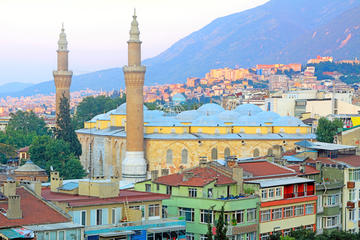 Ulu Cami (Grand Mosque)
Ulu Cami (Grand Mosque) A major landmark of early Ottoman architecture, the Grand Mosque is the largest mosque in the city of Bursa. Designed and constructed at the end of the 14th century, the mosque features twenty domes supported by twelve large columns and two minarets. It is said that the twe
Ulu Cami (Grand Mosque)
Ulu Cami (Grand Mosque) A major landmark of early Ottoman architecture, the Grand Mosque is the largest mosque in the city of Bursa. Designed and constructed at the end of the 14th century, the mosque features twenty domes supported by twelve large columns and two minarets. It is said that the twe
-
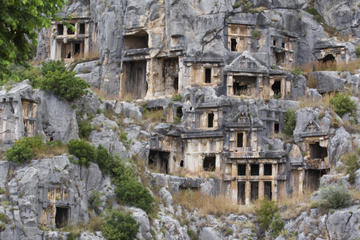 Myra Ruins
Myra Ruins Myra was once the capital of the Lycian Union along Turkeys Mediterranean coast. The remaining ruins are a mile from present-day Demre. Its also one of the towns along the Lycian Way, Turkeys famous long distance hiking trail between Fethiye and Antalya. The earliest recordings that men
Myra Ruins
Myra Ruins Myra was once the capital of the Lycian Union along Turkeys Mediterranean coast. The remaining ruins are a mile from present-day Demre. Its also one of the towns along the Lycian Way, Turkeys famous long distance hiking trail between Fethiye and Antalya. The earliest recordings that men
-
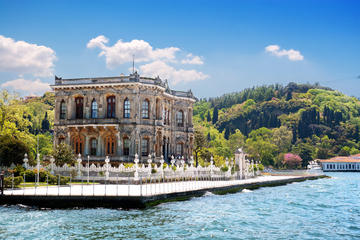 Küçüksu Palace
Küçüksu Palace See how the royalty of Istanbul’s past lived centuries ago with a visit to Küçüksu Palace, also referred to as Küçüksu Pavilion or Küçüksu Kasri. Built in the mid-1800s after being commissioned by Sultan Abdulmecit, Küçüksu Palace was used by Ottoman sultans as a summer palace where
Küçüksu Palace
Küçüksu Palace See how the royalty of Istanbul’s past lived centuries ago with a visit to Küçüksu Palace, also referred to as Küçüksu Pavilion or Küçüksu Kasri. Built in the mid-1800s after being commissioned by Sultan Abdulmecit, Küçüksu Palace was used by Ottoman sultans as a summer palace where
-
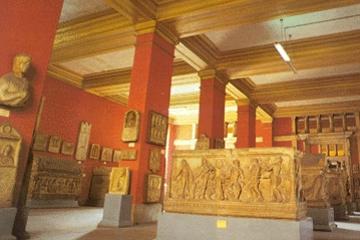 Archaelogy and Ethnography Museum
Archaelogy and Ethnography Museum The Izmir Archaeology and Ethnography Museum are 2 separate museums located side by side on the hill at Bahribaba Park, just a short walk from Konak. The Archaeology Museum is blessed with Greek and Roman relics taken from its neighbouring ancient cities. Here you
Archaelogy and Ethnography Museum
Archaelogy and Ethnography Museum The Izmir Archaeology and Ethnography Museum are 2 separate museums located side by side on the hill at Bahribaba Park, just a short walk from Konak. The Archaeology Museum is blessed with Greek and Roman relics taken from its neighbouring ancient cities. Here you
-
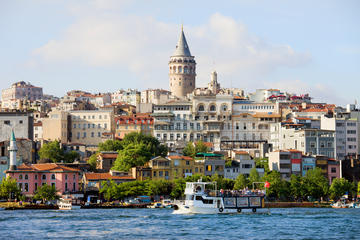 Beyoglu
Beyoglu Beyoglu is a cosmpolitan district on the European side of Istanbul that includes both Taksim Square and the famous Istiklal Caddesi. Located just north of the Golden Horn and connected to the old city center by the Galata Bridge, Beyoglu is the city’s modern center of shopping, entertainme
Beyoglu
Beyoglu Beyoglu is a cosmpolitan district on the European side of Istanbul that includes both Taksim Square and the famous Istiklal Caddesi. Located just north of the Golden Horn and connected to the old city center by the Galata Bridge, Beyoglu is the city’s modern center of shopping, entertainme
-
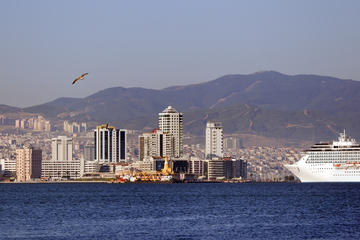 Izmir Cruise Port
Izmir Cruise Port Sitting on the coast of the Aegean Sea, Izmir is Turkey’s third largest city and second largest port. Once known as Smyrna, its history goes back to around 3,000 B.C. Today, Izmir is a modern city with a European feel that serves as a jumping off point for visits to nearby Ephes
Izmir Cruise Port
Izmir Cruise Port Sitting on the coast of the Aegean Sea, Izmir is Turkey’s third largest city and second largest port. Once known as Smyrna, its history goes back to around 3,000 B.C. Today, Izmir is a modern city with a European feel that serves as a jumping off point for visits to nearby Ephes
-
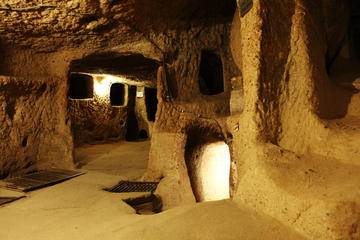 Kaymakli Underground City
Kaymakli Underground City Kaymaklı is a city dug deep into the soft volcanic rock in the Cappadocia region. There are around 100 underground cities in the area although only a few are open to the public. Kaymaklı is the largest of them. It is estimated that around 3,500 people once lived here.&nbs
Kaymakli Underground City
Kaymakli Underground City Kaymaklı is a city dug deep into the soft volcanic rock in the Cappadocia region. There are around 100 underground cities in the area although only a few are open to the public. Kaymaklı is the largest of them. It is estimated that around 3,500 people once lived here.&nbs
Total
1173 -travel
FirstPage PreviousPage NextPage LastPage CurrentPage:
8/59 20-travel/Page GoTo Page:
 Aspendos Ruins and Theater
Aspendos Ruins and Theater Aspendos was an ancient Greco-Roman city founded around 1000 B.C. It was located about 25 miles from the modern city of Antalya, and its known for having one of the best preserved theaters from antiquity. Despite being built in 155, the theater is still in great shape an
Aspendos Ruins and Theater
Aspendos Ruins and Theater Aspendos was an ancient Greco-Roman city founded around 1000 B.C. It was located about 25 miles from the modern city of Antalya, and its known for having one of the best preserved theaters from antiquity. Despite being built in 155, the theater is still in great shape an
 Manavgat Waterfalls
Manavgat Waterfalls The Manavgat Waterfalls are located along the Manavgat River just outside the town of Manavgat. Manavgat is located almost six miles from Side and about 50 miles from Antalya. The river flows through Manavgat and out to the Mediterranean Sea, making this area very fertile for g
Manavgat Waterfalls
Manavgat Waterfalls The Manavgat Waterfalls are located along the Manavgat River just outside the town of Manavgat. Manavgat is located almost six miles from Side and about 50 miles from Antalya. The river flows through Manavgat and out to the Mediterranean Sea, making this area very fertile for g
 Istiklal Street
Istiklal Street Istiklal Street, known in Turkish as Istiklal Caddesi, is one of the most well-known avenues in Istanbul. Stretching for about three kilometers, it is the main pedestrian thoroughfare in the city and welcomes as many as 3 million visitors on any given day.Known as Grand Avenue dur
Istiklal Street
Istiklal Street Istiklal Street, known in Turkish as Istiklal Caddesi, is one of the most well-known avenues in Istanbul. Stretching for about three kilometers, it is the main pedestrian thoroughfare in the city and welcomes as many as 3 million visitors on any given day.Known as Grand Avenue dur
 Sadberk Hanim Museum
Sadberk Hanim Museum The Sadberk Hanim Museum was established by the Vehbi Koc Foundation and named in honor of Vehbi Koc’s deceased wife, Sadberk. Featuring the private collection of Sadberk Koc, the museum consists of two 19th century villas in the Buyukdere neighborhood of Istanbul. Opened in 1
Sadberk Hanim Museum
Sadberk Hanim Museum The Sadberk Hanim Museum was established by the Vehbi Koc Foundation and named in honor of Vehbi Koc’s deceased wife, Sadberk. Featuring the private collection of Sadberk Koc, the museum consists of two 19th century villas in the Buyukdere neighborhood of Istanbul. Opened in 1
 Hodjapasha Cultural Center
Hodjapasha Cultural Center It’s been said that music, rhythm, and dance are universal languages that can transcend borders, ethnicity, race, and time. This is certainly true at the Hodjapasha Cultural Center, where ancient Turkish and Anatolian traditions are rhythmically weaved right before your
Hodjapasha Cultural Center
Hodjapasha Cultural Center It’s been said that music, rhythm, and dance are universal languages that can transcend borders, ethnicity, race, and time. This is certainly true at the Hodjapasha Cultural Center, where ancient Turkish and Anatolian traditions are rhythmically weaved right before your
 Balat
Balat Balat is a historically Jewish neighborhood on the shores of the Golden Horn in Istanbul. While a significant Jewish population existed in the area since Byzantine times, the community grew substantially as Jews were evicted from Spain in 1492. The most important attraction in the neighborh
Balat
Balat Balat is a historically Jewish neighborhood on the shores of the Golden Horn in Istanbul. While a significant Jewish population existed in the area since Byzantine times, the community grew substantially as Jews were evicted from Spain in 1492. The most important attraction in the neighborh
 Miniaturk
Miniaturk One of the largest miniature parks in the world, Miniaturk opened in 2003 on the northeastern shore of the Golden Horn in Istanbul. Covering 60,000 square meters, the park features 120 models of structures from throughout Turkey. It is divided into three sections: Istanbul, Anatolia and
Miniaturk
Miniaturk One of the largest miniature parks in the world, Miniaturk opened in 2003 on the northeastern shore of the Golden Horn in Istanbul. Covering 60,000 square meters, the park features 120 models of structures from throughout Turkey. It is divided into three sections: Istanbul, Anatolia and
 Historic Areas of Istanbul
Historic Areas of Istanbul The Historic Areas of Istanbul were added the UNESCO World Heritage list in 1985. The designation includes sites such as the Hagia Sophia, Topkapi Palace, Galata Bridge and Suleymaniye Mosque and is divided into four zones: the Archaeological Park at the tip of the Bosph
Historic Areas of Istanbul
Historic Areas of Istanbul The Historic Areas of Istanbul were added the UNESCO World Heritage list in 1985. The designation includes sites such as the Hagia Sophia, Topkapi Palace, Galata Bridge and Suleymaniye Mosque and is divided into four zones: the Archaeological Park at the tip of the Bosph
 Taksim Square
Taksim Square Located on the European side of Istanbul, Taksim Square is the heart of the modern part of the city. It takes its name from the stone reservoir on the west side of the square, which today houses the Taksim Republic Art Gallery. Sultan Mahmud I originally established the square as the
Taksim Square
Taksim Square Located on the European side of Istanbul, Taksim Square is the heart of the modern part of the city. It takes its name from the stone reservoir on the west side of the square, which today houses the Taksim Republic Art Gallery. Sultan Mahmud I originally established the square as the
 Bosphorus
Bosphorus Bosphorus, or the Istanbul Strait, functions not just as a border between Europe and Asia, but as one of the most beautiful sites in all of Turkey. Lined with scenic greenery, palaces, parks, and not to mention an absolutely gorgeous waterfront, Bosphorus has much more to offer than one
Bosphorus
Bosphorus Bosphorus, or the Istanbul Strait, functions not just as a border between Europe and Asia, but as one of the most beautiful sites in all of Turkey. Lined with scenic greenery, palaces, parks, and not to mention an absolutely gorgeous waterfront, Bosphorus has much more to offer than one
 Camlica Hill
Camlica Hill Just a few kilometers from Uskudar in Istanbul, Camlica Hill offers a different perspective of the city. Split into two hills – Big Camlica and Little Camlica – it is a popular destination for residents to picnic and barbeque on the weekends.At 267 meters above sea level, Big Camlica
Camlica Hill
Camlica Hill Just a few kilometers from Uskudar in Istanbul, Camlica Hill offers a different perspective of the city. Split into two hills – Big Camlica and Little Camlica – it is a popular destination for residents to picnic and barbeque on the weekends.At 267 meters above sea level, Big Camlica
 Walls of Constantinople
Walls of Constantinople Constantine the Great began construction in the year 324, the Walls of Constantinople completely surrounded the new city, protecting it from attack by land and by sea. Beginning at the Church of St. Anthony at the Golden Horn and running south and southwest to the Church o
Walls of Constantinople
Walls of Constantinople Constantine the Great began construction in the year 324, the Walls of Constantinople completely surrounded the new city, protecting it from attack by land and by sea. Beginning at the Church of St. Anthony at the Golden Horn and running south and southwest to the Church o
 Gulf of Gökova
Gulf of Gökova Hemmed in by a dramatic wall of sea cliffs and peppered with sandy coves and rocky islands, the Gulf of Gökova (sometimes called the Ceramic Gulf) is one of Turkey’s most picturesque coastal landscapes. Formed by the Aegean Sea flowing between the Bodrum Peninsula to the north and t
Gulf of Gökova
Gulf of Gökova Hemmed in by a dramatic wall of sea cliffs and peppered with sandy coves and rocky islands, the Gulf of Gökova (sometimes called the Ceramic Gulf) is one of Turkey’s most picturesque coastal landscapes. Formed by the Aegean Sea flowing between the Bodrum Peninsula to the north and t
 Ulu Cami (Grand Mosque)
Ulu Cami (Grand Mosque) A major landmark of early Ottoman architecture, the Grand Mosque is the largest mosque in the city of Bursa. Designed and constructed at the end of the 14th century, the mosque features twenty domes supported by twelve large columns and two minarets. It is said that the twe
Ulu Cami (Grand Mosque)
Ulu Cami (Grand Mosque) A major landmark of early Ottoman architecture, the Grand Mosque is the largest mosque in the city of Bursa. Designed and constructed at the end of the 14th century, the mosque features twenty domes supported by twelve large columns and two minarets. It is said that the twe
 Myra Ruins
Myra Ruins Myra was once the capital of the Lycian Union along Turkeys Mediterranean coast. The remaining ruins are a mile from present-day Demre. Its also one of the towns along the Lycian Way, Turkeys famous long distance hiking trail between Fethiye and Antalya. The earliest recordings that men
Myra Ruins
Myra Ruins Myra was once the capital of the Lycian Union along Turkeys Mediterranean coast. The remaining ruins are a mile from present-day Demre. Its also one of the towns along the Lycian Way, Turkeys famous long distance hiking trail between Fethiye and Antalya. The earliest recordings that men
 Küçüksu Palace
Küçüksu Palace See how the royalty of Istanbul’s past lived centuries ago with a visit to Küçüksu Palace, also referred to as Küçüksu Pavilion or Küçüksu Kasri. Built in the mid-1800s after being commissioned by Sultan Abdulmecit, Küçüksu Palace was used by Ottoman sultans as a summer palace where
Küçüksu Palace
Küçüksu Palace See how the royalty of Istanbul’s past lived centuries ago with a visit to Küçüksu Palace, also referred to as Küçüksu Pavilion or Küçüksu Kasri. Built in the mid-1800s after being commissioned by Sultan Abdulmecit, Küçüksu Palace was used by Ottoman sultans as a summer palace where
 Archaelogy and Ethnography Museum
Archaelogy and Ethnography Museum The Izmir Archaeology and Ethnography Museum are 2 separate museums located side by side on the hill at Bahribaba Park, just a short walk from Konak. The Archaeology Museum is blessed with Greek and Roman relics taken from its neighbouring ancient cities. Here you
Archaelogy and Ethnography Museum
Archaelogy and Ethnography Museum The Izmir Archaeology and Ethnography Museum are 2 separate museums located side by side on the hill at Bahribaba Park, just a short walk from Konak. The Archaeology Museum is blessed with Greek and Roman relics taken from its neighbouring ancient cities. Here you
 Beyoglu
Beyoglu Beyoglu is a cosmpolitan district on the European side of Istanbul that includes both Taksim Square and the famous Istiklal Caddesi. Located just north of the Golden Horn and connected to the old city center by the Galata Bridge, Beyoglu is the city’s modern center of shopping, entertainme
Beyoglu
Beyoglu Beyoglu is a cosmpolitan district on the European side of Istanbul that includes both Taksim Square and the famous Istiklal Caddesi. Located just north of the Golden Horn and connected to the old city center by the Galata Bridge, Beyoglu is the city’s modern center of shopping, entertainme
 Izmir Cruise Port
Izmir Cruise Port Sitting on the coast of the Aegean Sea, Izmir is Turkey’s third largest city and second largest port. Once known as Smyrna, its history goes back to around 3,000 B.C. Today, Izmir is a modern city with a European feel that serves as a jumping off point for visits to nearby Ephes
Izmir Cruise Port
Izmir Cruise Port Sitting on the coast of the Aegean Sea, Izmir is Turkey’s third largest city and second largest port. Once known as Smyrna, its history goes back to around 3,000 B.C. Today, Izmir is a modern city with a European feel that serves as a jumping off point for visits to nearby Ephes
 Kaymakli Underground City
Kaymakli Underground City Kaymaklı is a city dug deep into the soft volcanic rock in the Cappadocia region. There are around 100 underground cities in the area although only a few are open to the public. Kaymaklı is the largest of them. It is estimated that around 3,500 people once lived here.&nbs
Kaymakli Underground City
Kaymakli Underground City Kaymaklı is a city dug deep into the soft volcanic rock in the Cappadocia region. There are around 100 underground cities in the area although only a few are open to the public. Kaymaklı is the largest of them. It is estimated that around 3,500 people once lived here.&nbs